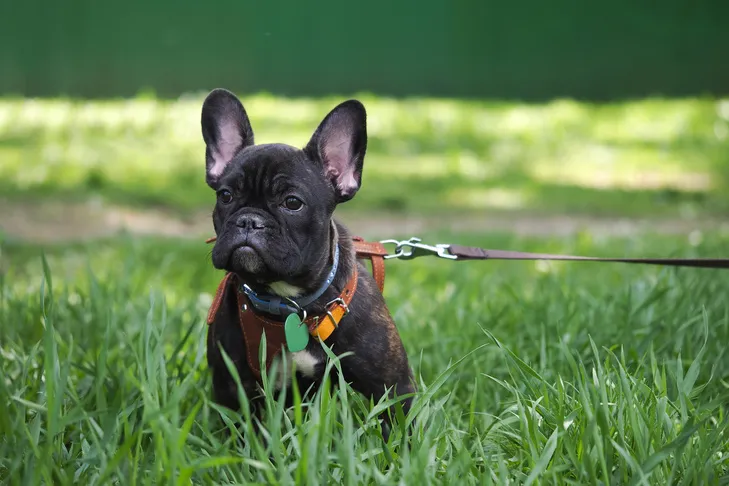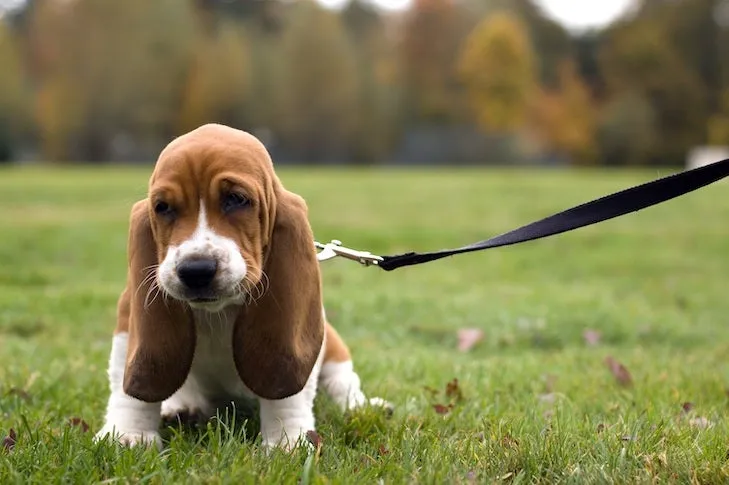Many people assume that puppies instinctively know how to walk politely on a leash. However, this crucial skill is learned through patient training and consistent practice. Mastering leash manners is an invaluable asset for both you and your furry friend, enhancing every outdoor adventure. This guide will walk you through foundational steps to teach your puppy how to get them to walk on a leash, ensuring a pleasant and safe experience for everyone. We’ll also cover common issues and practical troubleshooting tips from expert dog trainers to help you cultivate excellent leash behavior.
Foundational Leash Training for Your Puppy
Establishing a solid groundwork is essential for successful leash training. Follow these sequential steps to introduce your puppy to the leash and build positive associations.
Introduce Collar/Harness and Leash
Begin by gently introducing your puppy to a collar or harness and a leash. Allow them to wear these items for brief periods inside the house, especially during playtime or when you’re offering treats. The goal is for your puppy to associate their new gear with positive experiences, making “collar-and-leash time” synonymous with fun and rewards. This initial conditioning helps them become comfortable with the feel of the equipment before actual walks begin.
Teach a Positive Reinforcement Cue
Next, establish a clear sound cue that signals “food is coming.” This could be a clicker, a verbal marker like “yes,” or a simple tongue cluck – consistency is key. In a quiet, distraction-free environment, with your puppy wearing their collar and leash, make your chosen sound. The instant your puppy turns their head or looks at you, immediately reward them with a small, high-value treat. Repeat this several times. You’ll soon notice your puppy not only looking at you but actively approaching you after hearing the cue, eager for their reward.
 French bulldog puppy in a harness sitting in tall green grass on a leash for a walk.
French bulldog puppy in a harness sitting in tall green grass on a leash for a walk.
Encourage Your Puppy to Come to You
Once your puppy reliably responds to the cue, begin adding movement. While they are still on leash and collar, make your cue sound and take a few steps backward. As your puppy follows you, reward them when they reach you. Gradually increase the number of steps you take backward before offering the treat. The aim is for your puppy to associate your cue with coming towards you and walking alongside you for a few paces. Remember that puppies have short attention spans; keep training sessions brief and positive, ending before they become mentally fatigued or lose interest. Consistent, short sessions are more effective than infrequent, long ones.
Practice Indoors in a Calm Environment
With your puppy now understanding the “come” cue and comfortable with their gear, it’s time to practice short walks indoors. Choose a room with minimal distractions. The sensation of the leash and collar, combined with learning to follow you, will be challenge enough at this stage. Continue to offer praise and treats generously as your puppy learns to walk alongside you on a leash. This controlled environment builds confidence and reinforces good habits before you introduce the complexities of the outside world. This is a critical step in how to teach your puppy to walk with a leash effectively.
Transition Training to the Outdoors
Finally, you’re ready to apply your puppy’s budding skills in the great outdoors. This step presents new challenges, as the multitude of sounds, smells, and sights will be incredibly exciting and potentially distracting for your puppy. Patience is paramount, and initial outdoor walks should be kept very short. If you notice your puppy is about to lunge towards something or become distracted (keep your eyes on them constantly for these cues), use your established sound cue and take a few steps away to redirect their focus. Reward them immediately with a treat for following you. Mastering how do i get my puppy to walk outside requires consistency.
 Basset Hound puppy sitting in the grass on lead.
Basset Hound puppy sitting in the grass on lead.
Troubleshooting Common Leash-Walking Challenges
Even with a strong foundation, puppies can develop specific behaviors as they grow, encounter new places, or face novel distractions. Learning to manage these common issues is crucial for pleasant walks and helps ensure your dog can eventually pass tests like the Canine Good Citizen.
Dealing with a Pulling Puppy
If your puppy begins to pull aggressively in a direction different from yours, immediately transform yourself into “a tree.” Stand completely still and refuse to move an inch until your puppy returns to your side and the leash slackens. Avoid yanking, jerking, or dragging your puppy along. This teaches them that pulling gets them nowhere, while a loose leash allows forward momentum. For persistent pullers, specialized tools like front-hook harnesses or head halters can provide additional leverage and control, making it easier to correct the behavior. Consistently working on how to stop puppies from pulling on leash will yield results.
Managing Puppy Lunging
When your puppy fixates on something and attempts to lunge—be it another dog, a car, or a skateboarder—proactivity is key. Before they have a chance to lunge, try to redirect their attention using your cue sound and a high-value treat. Increase the physical distance between your puppy and the object of their fixation. Always remain alert and anticipate potential triggers before they get too close. While this behavior can be more prevalent in certain breeds, any dog can react strongly to unfamiliar or exciting stimuli.
Addressing Puppy Barking on Leash
Some puppies develop a habit of barking at other dogs or passersby during walks. This behavior is sometimes linked to insufficient mental and physical exercise. Ensure your puppy receives the appropriate amount of stimulation for their age and breed. If barking persists, employ a strategy similar to managing lunging: create more distance from the barking trigger and offer treats before your puppy starts to vocalize. The goal is to condition them to shift their attention to you whenever they spot another dog, associating calm observation with rewards. If you feel your my pitbull puppy is out of control or any other breed is showing aggressive leash behavior, consider seeking professional help.
Consistent and positive reinforcement is the cornerstone of successful leash training. Over time, you’ll gradually reduce the number of treats and the amount of intervention your puppy needs during walks. However, it’s always wise to keep a few treats on hand to randomly reinforce good leash-walking behavior, ensuring that those enjoyable strolls remain a highlight for both of you.
